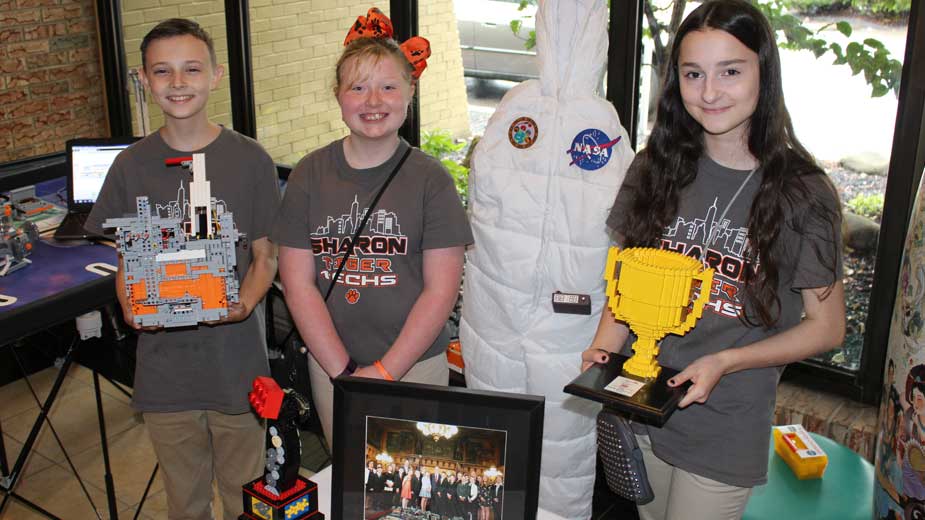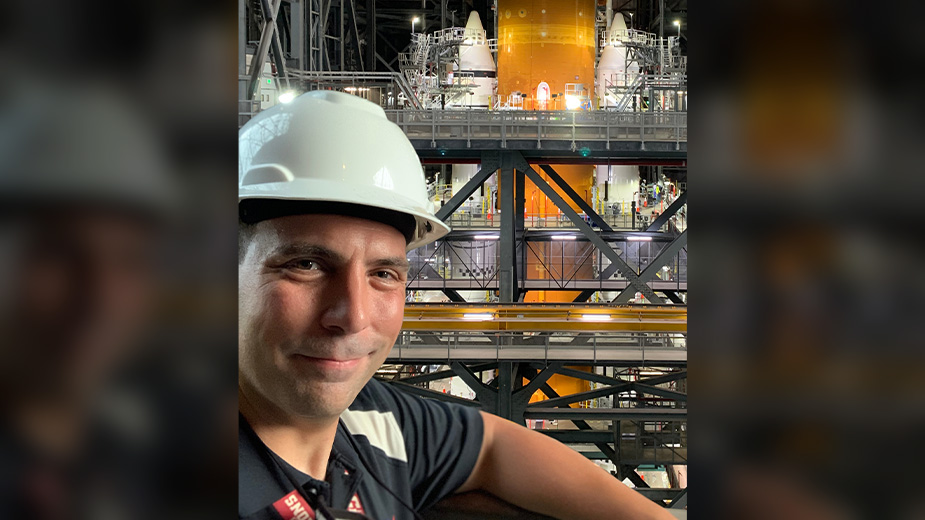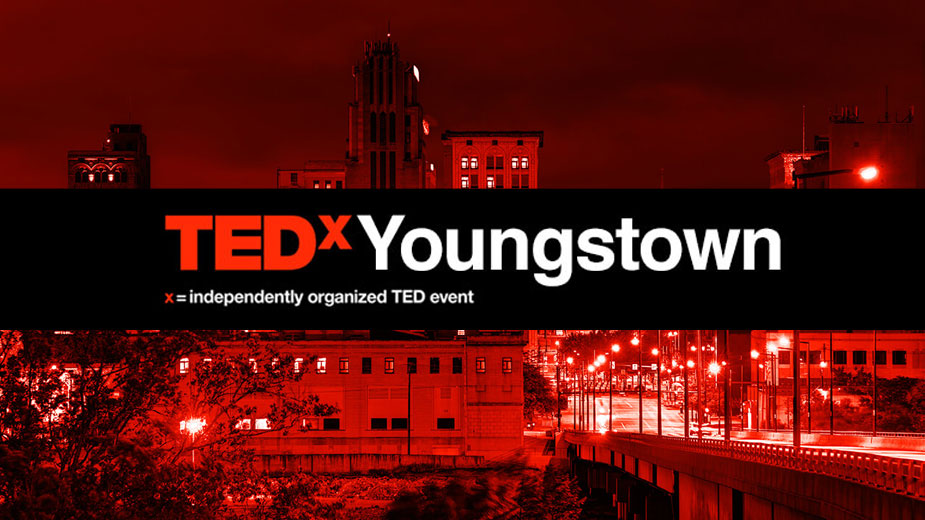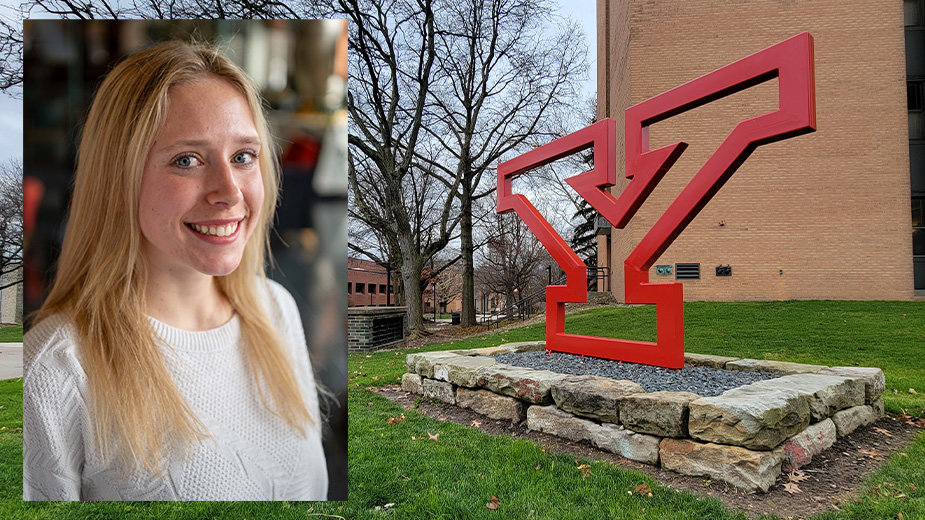Sharon Robotics Team Solves Problems, Explores Careers
By Jeremy Lydic
WEST MIDDLESEX, Pa. – With the flick of a switch, the robot constructed with a Lego Mindstorms kit makes its way around the table-top obstacle course, completing tasks and following a predestined path seemingly of its own volition.
The taskmasters – Katelyn Powell, fifth grade, and Jack Hynes, seventh grade, of Case Avenue Middle School in Sharon, Pa. – explain what’s happening with each step as the robot picks up and releases tools, loads and drops cargo and docks at its base.
“Now, it’s going to come over and put down the actuator; it’s going to pick up this astronaut to take back to base,” explained Powell, as the robot picks up a toy figure.
Powell and Hynes are members of the Sharon Tiger Techs Robotics Team, which constructed and programmed the robot to complete its tasks.
The team, coached by Dave Tomko, earned national recognition in May when it won the second-place Champions Award at the First Lego League North American Robotics Tournament in California, beating out 68 teams from around the world.
Robots are built entirely out of the Lego kits and programmed using the EV3 programming language, Tomko said. The robot had to complete 15 missions on the table and complete as many challenges as possible in 2½ minutes.
On Nov. 6, the team and Tomko will be honored by the Shenango Valley Chamber of Commerce at its annual dinner.
Powell and Hynes joined teammate Kaytlen Moroney at the Rising Rust Belt Summit Oct. 7 to demonstrate their creations to attendees, including Pennsylvania Lt. Gov. John Fetterman.
“STEAM is thriving here and people have really noticed that when we’ve been talking to them today,” Hynes, the seventh grade student, said. “We’ve been getting a lot of positive feedback. It’s good to know people are with us on what we’re doing.”
In addition to the tournament, the robotics team has visited the Lyndon B. Johnson Space Center, the Challenger Center, John H. Glenn Research Center and the Goddard Space Flight Center to speak with NASA representatives. For Hynes, who aspires to be a software engineer for NASA, this kind of exposure is important to show that Sharon is more than its steel roots, he said.
“It was great to learn about the problems in space,” Hynes said. “I think it’s cool that we’re learning about how to solve problems and we’re just kids.”

Last year, the students chose a project that focused on the problem of fluid shift in an astronaut’s body, which is “when your heart works hard against gravity to get fluid back to the heart,” Powell explained.
In the zero-gravity environment of space, the heart works just as hard, which causes fluid to accumulate in the head, “and that can cause facial swelling, pressure changes and vision changes,” the fifth grade student said.
The team designed a one-piece air-compression suit that inflates chambers within its lining, starting at an individual’s head and moving to the extremities to push the fluid from the head back down to the arms and legs, she said.
“We actually got a patent for this,” Powell said.
It’s a provisional patent, which essentially protects the team’s intellectual property for one year, Tomko said. During that time, the team will market the air-compression suit to potential partners to help them complete the process for the full patent, he said.
The team started working on the suit in October 2018 after meeting astronaut Michael Fincke in Pittsburgh, who told them about fluid shift. “From that point on, they spoke to multiple experts,” including heart doctors, said Tomko, their coach.
“Every expert they talked to, they made more revisions to the suit,” he said. “They continued revising based on all the feedback they were getting.”
During the First Lego League Global Innovation Award competition this summer in California, the team competed against the top 20 teams in the world and got the chance to speak with engineers about the design, which Tomko said is nearly complete, save for a few minor tweaks.
“They’ve done quite a bit of research on all the materials they would use and the durability factor. So they feel pretty confident in that aspect,” Tomko said.
Getting the students involved in the robotics program is important because it shows them educational possibilities as they get older, as well as “the potential they have with the talents they bring,” he said.
Demonstrating their work at public events is equally important because it shows them there are career opportunities in the area where they can employ their skills in robotics.
“We’ve had the support from the community, especially local software engineers who come in to talk to the students and share what they’ve learned,” Tomko said. “They can see that there are jobs around here to utilize the skills they’re learning.”
Skills that the students share with other children every chance they get. As part of their practice of core values, the teams attend community events and host camps to share their knowledge with students, Tomko said.
“That’s good because they’re teaching other kids too.”
Copyright 2024 The Business Journal, Youngstown, Ohio.


